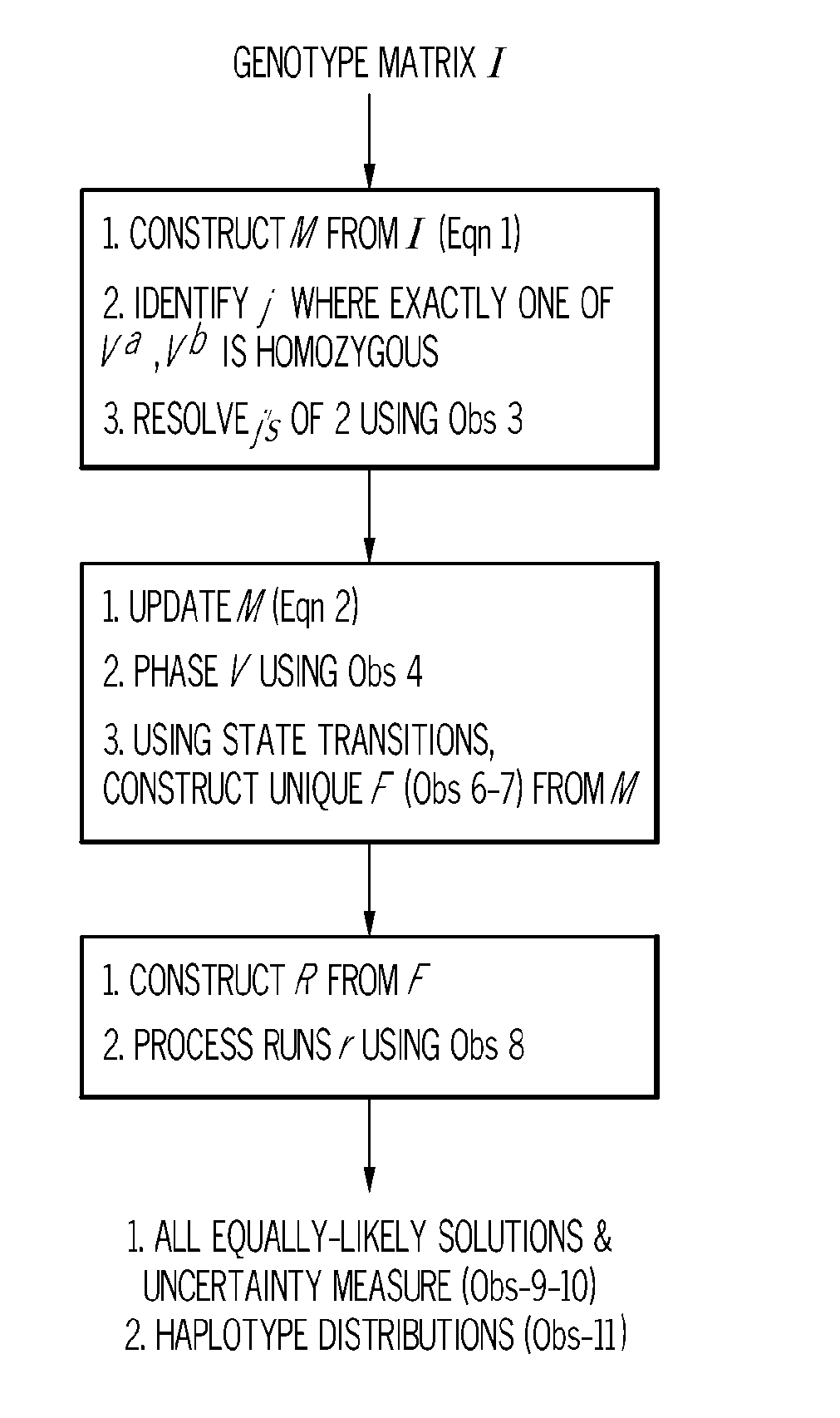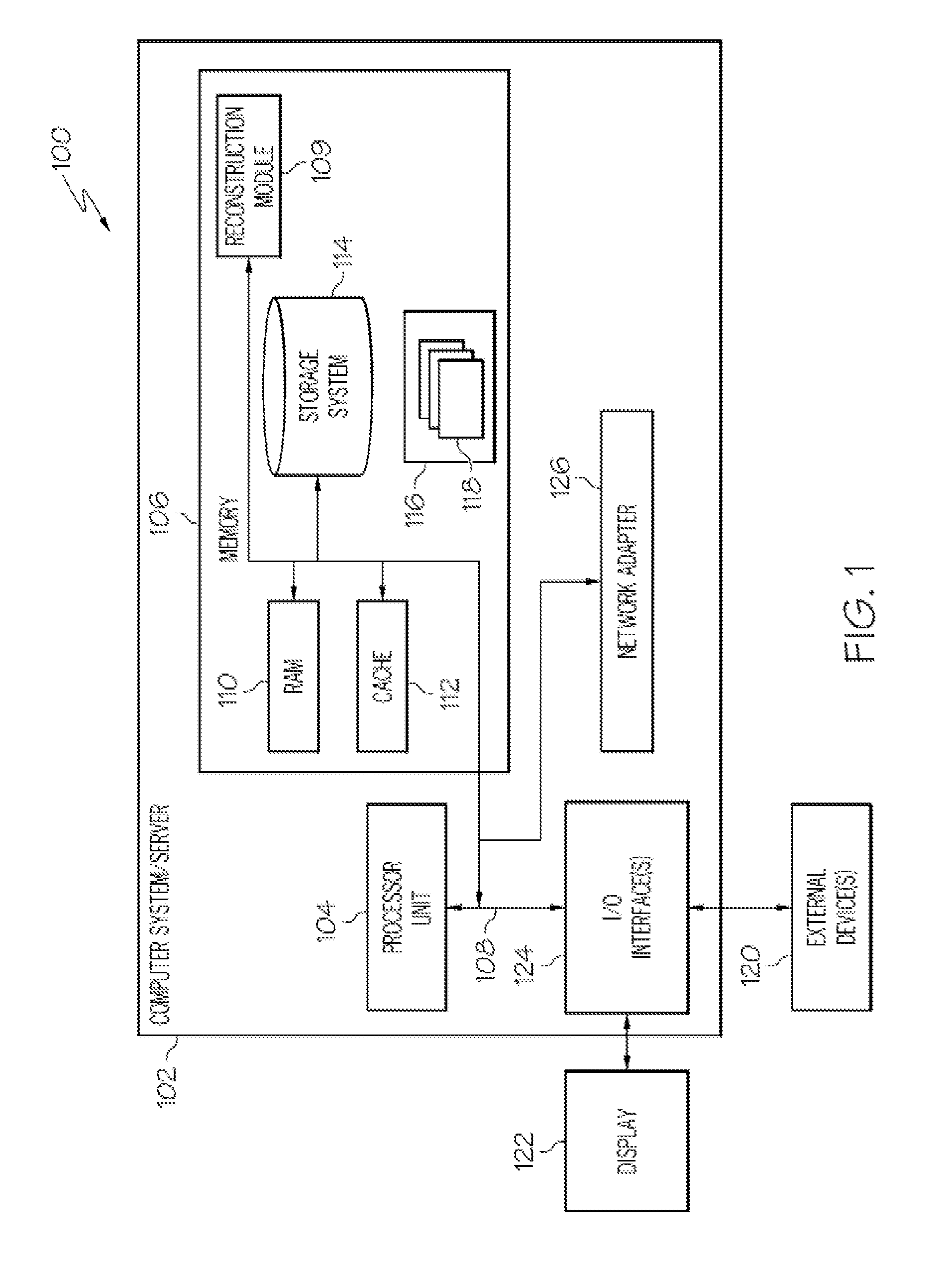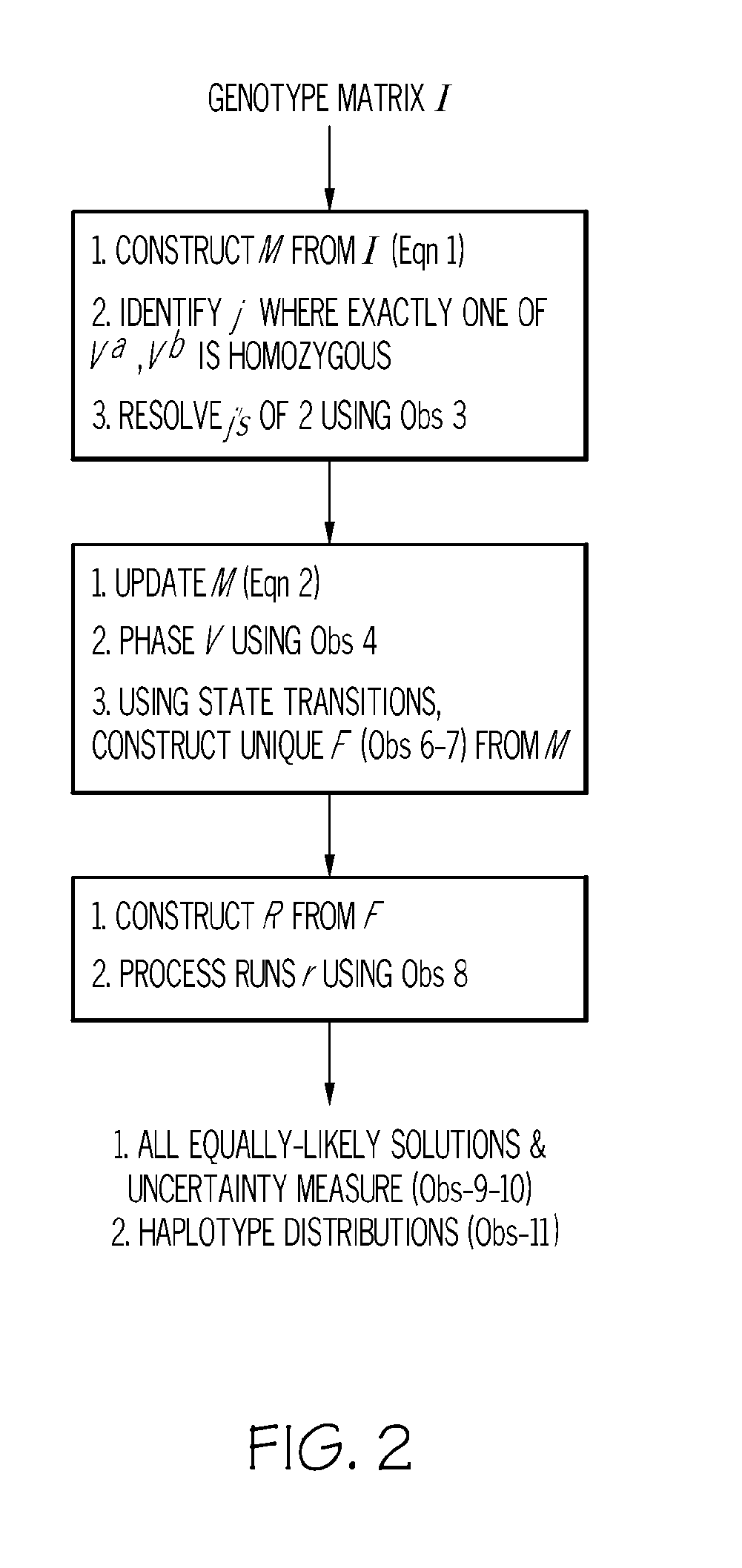Exact haplotype reconstriction of f2 populations
a haplotype and exact technology, applied in the field of computational biology, can solve the problem that the descendants do not always receive complete copies of the chromosomes of their parents
- Summary
- Abstract
- Description
- Claims
- Application Information
AI Technical Summary
Benefits of technology
Problems solved by technology
Method used
Image
Examples
Embodiment Construction
[0017]Haplotype information can be extremely useful in determining the specific form of a gene that is associated with a phenotype such as disease susceptibility. Haplotype information can be used first to determine the genomic location of a gene associated with the phenotype and second to determine the exact forms (haplotypes) that are associated with the phenotype at that location. Haplotype information is also useful in the field of population genetics.
[0018]One problem with constructing haplotype information from genotype data is that given genotypes of n progenies on m loci, the general problem of constructing haplotypes from genotypes is NP complete under different models such as parsimony, maximum likelihood, and phylogeny. However, the duality of bi-allelic markers and F2 progenies (i.e., two founder sequences per haplotype), as is the case with plant breeding data, provides a compelling combinatoric puzzle. Rather than tweak generic software to adapt to the stringent condit...
PUM
 Login to View More
Login to View More Abstract
Description
Claims
Application Information
 Login to View More
Login to View More - R&D
- Intellectual Property
- Life Sciences
- Materials
- Tech Scout
- Unparalleled Data Quality
- Higher Quality Content
- 60% Fewer Hallucinations
Browse by: Latest US Patents, China's latest patents, Technical Efficacy Thesaurus, Application Domain, Technology Topic, Popular Technical Reports.
© 2025 PatSnap. All rights reserved.Legal|Privacy policy|Modern Slavery Act Transparency Statement|Sitemap|About US| Contact US: help@patsnap.com



